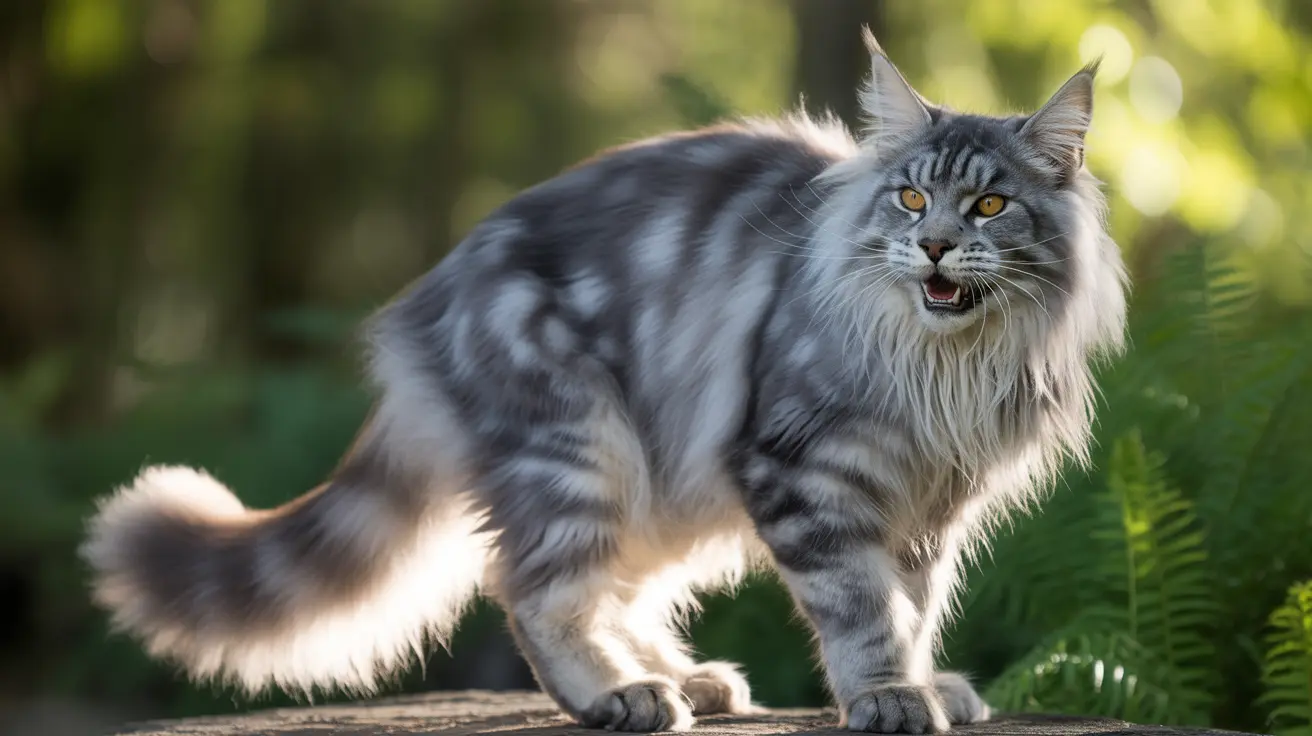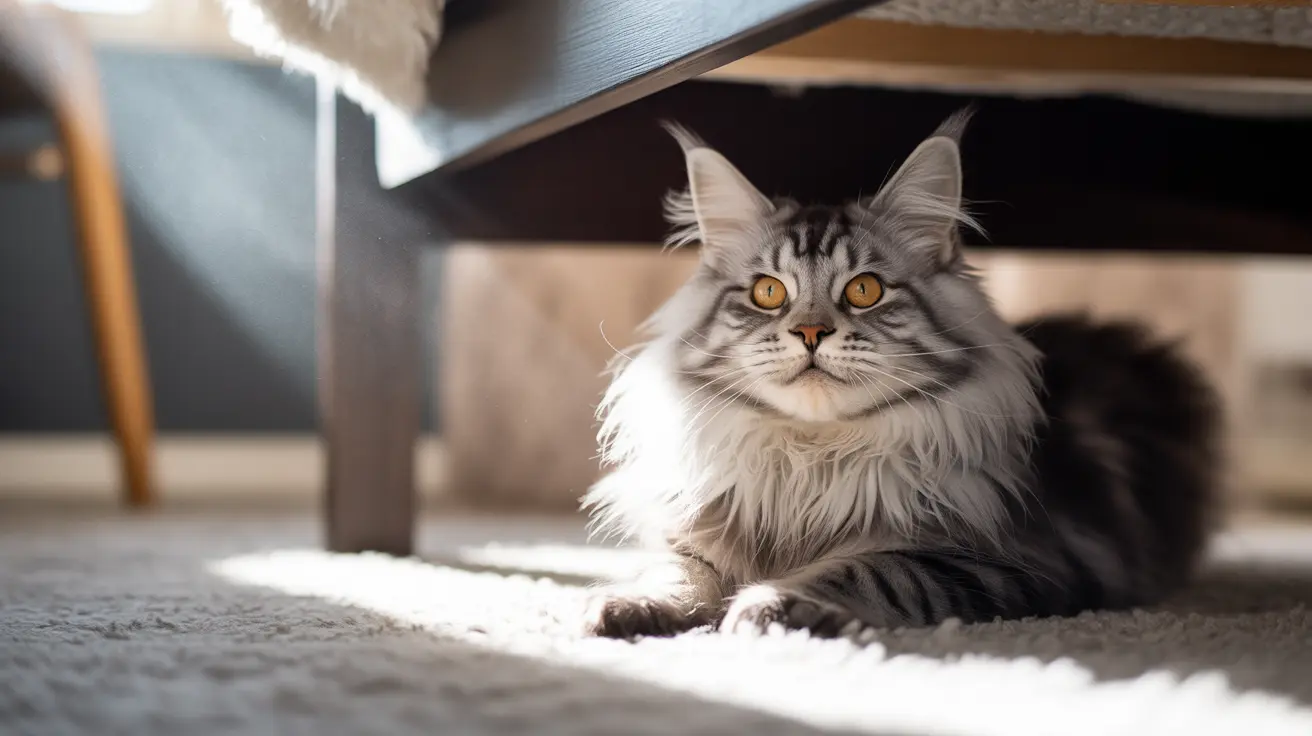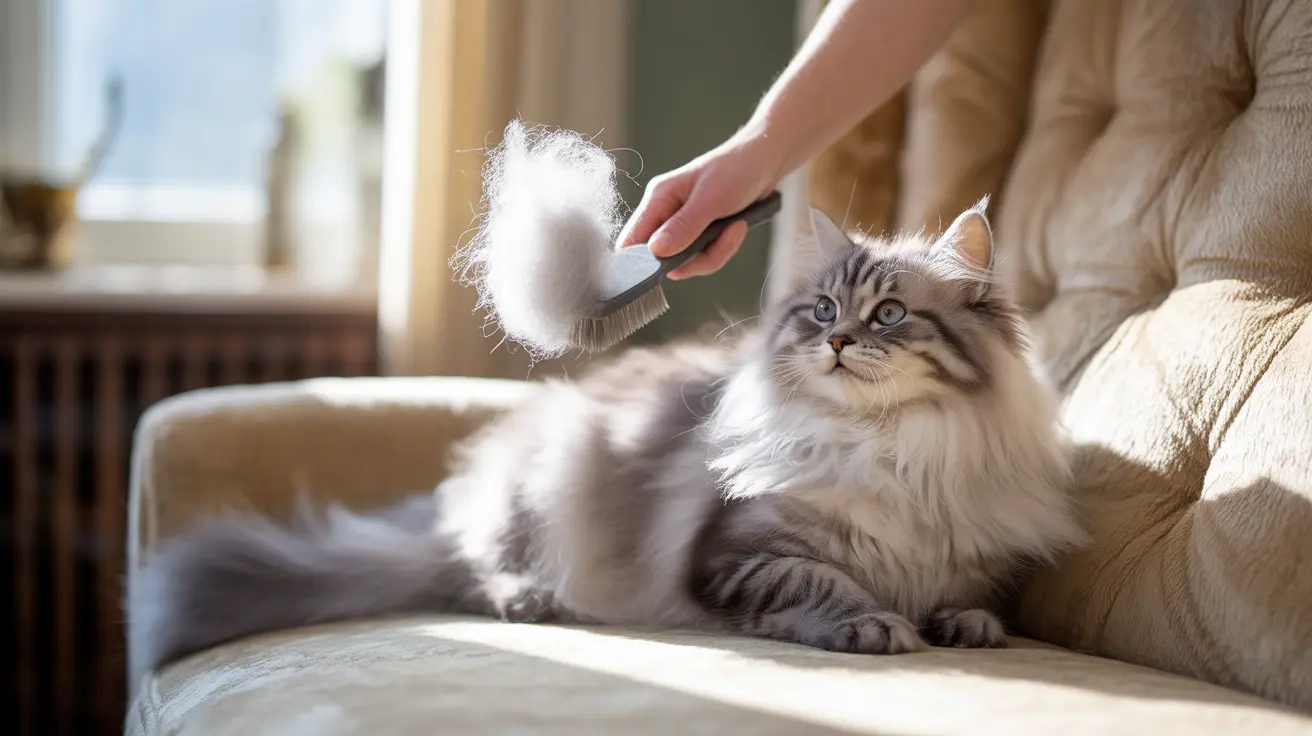Managing Aggressive Behavior in Cats: A Comprehensive Guide for Cat Owners
Feline aggression affects countless households worldwide, with studies showing that 27 percent of cats surrendered to shelters for behavioral reasons are given up due to aggressive tendencies. If you're struggling with managing aggressive behavior in cats, you're not alone—and more importantly, there are proven solutions that can help restore harmony to your home.
Understanding that cat aggression isn't malicious but rather a complex behavioral response to various triggers is the first step toward effective management. Whether you're dealing with a single aggressive cat or conflicts in a multi-cat household, this comprehensive guide will provide you with the knowledge and tools needed to address aggressive behavior safely and humanely.
From recognizing early warning signs to implementing proven behavioral modification techniques, you'll discover how to transform your cat's aggressive tendencies into more appropriate behaviors while strengthening the bond between you and your feline companion.
Understanding the Root Causes of Cat Aggression
Managing aggressive behavior in cats begins with understanding that feline aggression is defined as hostile or violent behavior intended to dominate or intimidate another individual. This complex behavioral problem stems from various triggers and can target both other cats and humans, making it particularly challenging to address effectively.
The causes of cat aggression are multifaceted, often involving stress, fear, territorial disputes, or medical issues. Unlike human aggression, cats don't act out of spite or malice—their aggressive responses are typically defensive mechanisms or natural behaviors that have become problematic in domestic settings.
Medical causes must be ruled out first, as conditions like hyperthyroidism, osteoarthritis, dental disease, and central nervous system problems can trigger aggressive responses. Pain-induced aggression occurs when cats attack to avoid touch or movement that causes discomfort, making veterinary examination crucial for any sudden onset of aggressive behavior.
Recognizing Early Warning Signs and Body Language
Successful management of cat aggression relies heavily on recognizing early warning signs before escalation occurs. Understanding your cat's body language can prevent injuries and allow for timely intervention.
Offensive Aggression Signals
Cats displaying offensive aggression typically exhibit stiff postures, maintain direct eye contact, produce growling vocalizations, and may attack directly. Their tail often remains erect with raised hairs, ears are positioned forward or slightly back, and their overall stance appears rigid and threatening.
Defensive Aggression Indicators
Defensive aggression presents differently, with cats adopting crouching positions, tucking their tails close to their bodies, hissing, and swatting with claws extended. Additional signs include dilated pupils, ears flattened and held outward, whiskers pressed downward, and heads held upward while lying prone.
Fear-based aggression often accompanies defensive postures and includes flattened ears, fur standing on end, and attempts to make the cat appear larger. Recognizing these signs early allows you to remove triggers or redirect the situation before aggression escalates.
Types of Cat Aggression and Their Specific Management Approaches
Effective management of aggressive behavior in cats requires understanding the specific type of aggression you're dealing with, as each type demands tailored intervention strategies.
Play Aggression
Play aggression commonly affects young cats or kittens that weren't properly socialized with littermates, preventing them from learning appropriate play inhibition. Signs preceding play aggression include tail thrashing, pinned ears, and dilated pupils.
Management involves distracting the cat before aggression occurs using appropriate toys and restricting access to overstimulating environments. Use noise deterrents to redirect attention, but never resort to physical punishment, which can worsen the behavior.
Fear Aggression
Triggered by unfamiliar stimuli or unpleasant experiences, fear aggression requires careful handling. The most effective approach involves avoiding fearful situations when possible and implementing gradual desensitization paired with positive rewards to build confidence and reduce fear responses.
Petting-Induced Aggression
Some cats become aggressive when overstimulated during petting or grooming sessions. Prevention involves avoiding uninvited handling and using treats to reward brief, non-aggressive interactions. Always supervise interactions between children and cats prone to petting-induced aggression.
Redirected Aggression
This occurs when a cat becomes agitated by a stimulus it cannot reach and redirects that aggression toward a nearby person or animal. Management requires identifying and removing or blocking arousing stimuli while avoiding interactions during periods of high arousal.
Territorial and Inter-Cat Aggression
Territorial aggression involves cats defending established territories against new or returning cats, and sometimes even people. Inter-cat aggression often has hormonal components and typically emerges around social maturity.
Both types require slow reintroduction techniques, including confining new cats, feeding cats together at a comfortable distance, and implementing gradual positive interactions. Never physically intervene in cat fights due to the high risk of injury.
Establishing Leadership and Social Structure in Multi-Cat Households
Managing aggressive behavior in cats within multi-cat households often requires establishing clear social structure and leadership. Humans must position themselves as mediators and leaders to maintain harmony within the cat group.
Status-induced aggression involves behaviors demonstrating social dominance, such as blocking other cats' movement or swatting. The appropriate response is to ignore aggressive behavior while consistently rewarding relaxed, non-aggressive behaviors through treats and positive attention.
Social hierarchies naturally exist within multiple-cat households, and dominance struggles can lead to aggression even after years of peaceful coexistence. Recognizing when intervention is necessary and providing appropriate environmental enrichment helps maintain balance.
Environmental Enrichment and Territory Management
Creating an environment that reduces stress and provides appropriate outlets for natural behaviors is crucial for managing aggressive behavior in cats. Environmental enrichment strategies include providing interactive play opportunities, creating multiple hiding places, and using pheromone products to establish calming atmospheres.
Territory management involves ensuring each cat has access to essential resources without competition. This includes multiple feeding stations, water sources, litter boxes, and resting areas positioned throughout your home to prevent territorial conflicts.
Redirecting aggressive energy through structured interactive play sessions helps resolve conflicts and prevent escalation. Regular play sessions also provide physical and mental stimulation that can reduce overall stress levels and aggressive tendencies.
Behavioral Modification Techniques and Training Approaches
Successful management of cat aggression relies on consistent behavioral modification techniques combined with patience and positive reinforcement. Physical punishment or intimidation tactics should never be used, as they can worsen aggression and damage the human-animal bond.
Positive Reinforcement Training
Use food treats and praise to reinforce non-aggressive behaviors consistently. When cats display calm, relaxed behavior, immediately reward them to strengthen these positive responses. This approach helps cats associate peaceful interactions with positive outcomes.
Gradual Desensitization
For cats with specific aggression triggers, gradual desensitization involves slowly exposing them to triggering stimuli at low intensities while pairing the experience with positive rewards. This process requires patience but can effectively reduce aggressive responses over time.
Separation and Reintroduction Protocols
When dealing with inter-cat aggression, separate the aggressive cats and implement a slow reintroduction process. This involves feeding cats on opposite sides of a closed door, gradually moving food bowls closer, and eventually allowing supervised visual contact before full reintroduction.
When to Seek Professional Help
While many cases of cat aggression can be managed with proper techniques and patience, some situations require professional intervention. Consult a veterinary behaviorist when aggression is severe, persistent, or poses safety risks to household members or other pets.
Sudden onset aggression always warrants veterinary examination to rule out medical causes. Additionally, if your attempts at behavior modification aren't showing progress after several weeks of consistent application, professional guidance can help identify underlying issues and develop more targeted treatment plans.
In some cases, medications such as gabapentin, fluoxetine, or alprazolam may be prescribed by a veterinarian to assist with behavior modification, though these should always be combined with environmental and behavioral interventions rather than used as standalone solutions.
Safe Intervention Techniques and What to Avoid
When managing aggressive behavior in cats, knowing how to safely intervene can prevent injuries while avoiding actions that might worsen the situation. Never physically intervene in cat fights due to the high risk of injury to both you and the cats involved.
Instead, use startling techniques without physical contact to redirect aggressive behavior. This might include making loud noises, using a spray bottle, or creating distractions that cause cats to redirect their attention away from the conflict.
Actions to Avoid
- Never use physical punishment, as this typically escalates aggression and damages trust.
- Avoid comforting aggressive behavior, as this may inadvertently reinforce the response.
- Don't allow cats to fight unmonitored, hoping they'll "work it out" naturally.
- Avoid forcing interactions between aggressive cats or pushing them beyond their comfort zones during training, as this can create setbacks and increase fear-based responses.
Long-Term Management Strategies
Managing aggressive behavior in cats is often a long-term commitment requiring consistent application of proven techniques. Success depends on identifying and addressing underlying causes while providing appropriate environmental enrichment and maintaining positive relationships with your cats.
Regular veterinary checkups help ensure that medical issues aren't contributing to aggressive behavior. Maintaining consistent routines, providing adequate resources for all cats in the household, and continuing positive reinforcement training all contribute to long-term success.
Remember that some cats may always require management strategies to prevent aggressive episodes. This doesn't represent failure but rather successful adaptation to your cat's individual needs and personality.
Frequently Asked Questions
How long does it typically take to see improvement in aggressive cat behavior?
The timeline for improvement varies significantly depending on the type and severity of aggression, underlying causes, and consistency of intervention. Some cats may show improvement within days or weeks, while others may require months of consistent behavior modification. Early intervention generally leads to faster results.
Can medications help with cat aggression, and are they safe for long-term use?
Medications such as gabapentin, fluoxetine, or alprazolam can assist with managing cat aggression when prescribed and supervised by a veterinarian. However, they should always be combined with behavioral and environmental modifications rather than used as standalone solutions. Long-term use requires ongoing veterinary monitoring to prevent potential health issues.
Is it ever safe to let aggressive cats "fight it out" on their own?
No, allowing cats to fight unmonitored is dangerous and counterproductive. Cat fights can result in serious injuries, and unresolved conflicts typically worsen over time rather than resolve naturally. Professional intervention and structured reintroduction techniques are much more effective and safer approaches.
How can I tell the difference between play fighting and actual aggression between my cats?
Play fighting typically involves cats taking turns being the "aggressor," with relaxed body language between episodes, minimal vocalization, and no injury. True aggression features rigid body postures, continuous intense vocalization like growling or hissing, one cat consistently dominating, and potential for injury. When in doubt, interrupt the interaction and monitor for signs of stress or fear.
What should I do immediately after my cat shows aggressive behavior toward me?
After an aggressive episode, give your cat space to calm down and avoid further interaction until they return to a relaxed state. Don't punish or comfort the aggressive behavior. Instead, identify potential triggers that led to the episode and consider whether veterinary examination is needed, especially if the aggression was sudden or uncharacteristic.
Can certain cat breeds be more prone to aggressive behavior?
While individual personality matters more than breed, some cats may have genetic predispositions toward certain types of behavior. However, proper socialization, environmental management, and training techniques are effective for cats of all breeds. Age can also influence aggression, with unneutered cats and those reaching social maturity being more prone to territorial and inter-cat aggression.
How do I introduce a new cat to my household when I already have an aggressive cat?
Introducing a new cat to a household with an aggressive cat requires extra caution and a very gradual approach. Keep the new cat completely separated initially, allow scent exchange through closed doors, feed cats on opposite sides of barriers, and only progress to visual contact after both cats show calm behavior. This process may take weeks or months, and professional guidance is often beneficial.
Conclusion
Managing aggressive behavior in cats requires patience, understanding, and consistent application of proven techniques. Remember that cat aggression isn't malicious but rather a complex response to various triggers including stress, fear, territorial disputes, or medical issues. By recognizing early warning signs, implementing appropriate behavioral modification strategies, and creating supportive environments, most aggressive behaviors can be successfully managed.
The key to success lies in addressing underlying causes rather than simply suppressing symptoms, avoiding physical punishment that can worsen aggression, and seeking professional help when needed. With dedication and the right approach, you can help your cat develop more appropriate behaviors while strengthening your bond and creating a harmonious household for everyone involved.






